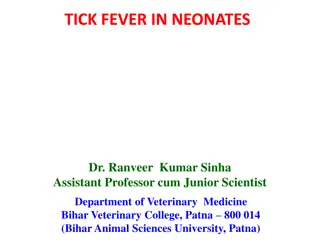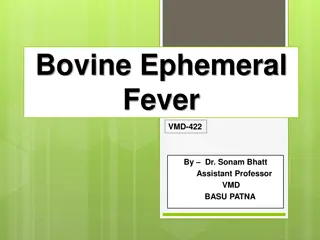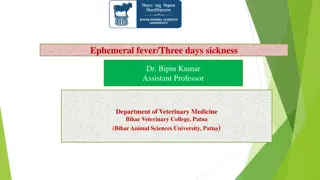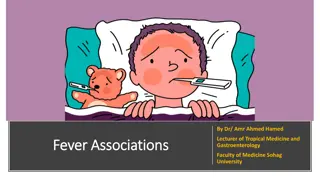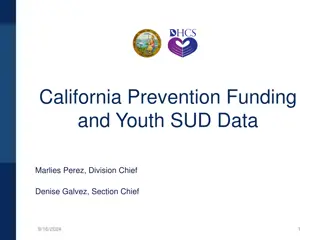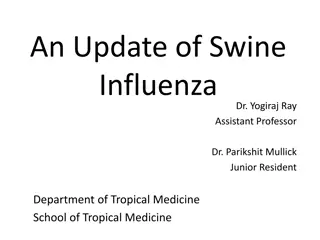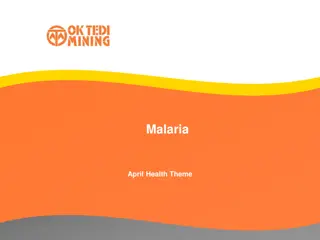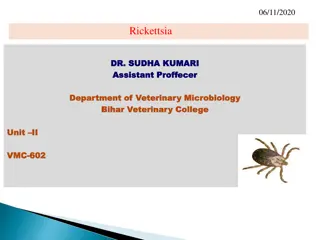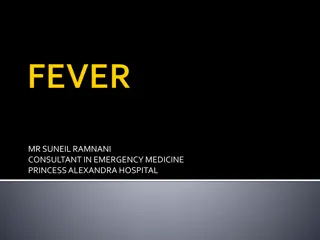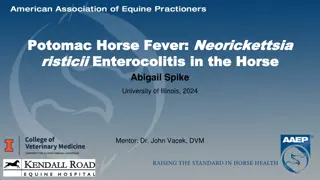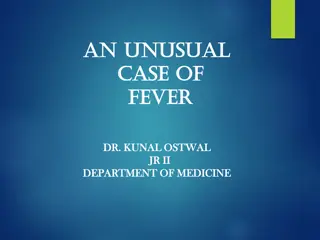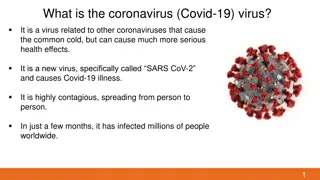Understanding Valley Fever: Symptoms, Risks, and Prevention in California
Valley fever is a fungal illness prevalent in specific California counties, primarily affecting the lungs. From common symptoms like fatigue and cough to severe infections, learn how this disease can impact individuals differently. Discover who is at higher risk, how long symptoms can last, and preventative measures to avoid exposure.
Download Presentation

Please find below an Image/Link to download the presentation.
The content on the website is provided AS IS for your information and personal use only. It may not be sold, licensed, or shared on other websites without obtaining consent from the author. Download presentation by click this link. If you encounter any issues during the download, it is possible that the publisher has removed the file from their server.
E N D
Presentation Transcript
Fresno Kern Kings Madera Merced Monterey San Joaquin San Luis Obispo Santa Barbara Tulare Ventura Per AB 203 this training is required for employees working in the following California counties These 11 counties have the highest rates of Valley fever where activities disturb the soil.
Valley fever is an illness that usually affects the lungs. It is caused by fungus that lives in the soil in many parts of California. When the soil is disturbed by digging, vehicles, or wind, the fungus spores get into the air. Spores are like tiny seeds that are too small to see What do you already know about Valley fever? People can breathe the spores into their lungs and get Valley fever Valley fever affects people differently. While many people who get Valley fever have no symptoms or only very mild ones, others can get very sick or even die Valley fever is not a contagious disease - it cannot be spread from person to person. It is almost always caused by breathing in the fungus from dust in the air
Fatigue(tiredness) Cough Difficulty breathing Fever What are some symptoms of Valley fever? Night sweats 60% show no symptoms 1 to 3 weeks for symptoms to develop Symptoms can be mistaken for a cold, influenza or pneumonia (but last longer than 1 week) and infects the lungs Muscle or joint pain Chest pain Weight loss Headache Rash
Valley fever can affect people in different ways. Some people may only have mild symptoms that get better on their own within a few weeks. Some symptoms, especially fatigue can take longer to go away and can last for several months How long do Valley fever symptoms last? In rare cases Valley fever can cause severe infections in the lungs or in other parts of the body including the brain, skin, bones or joints. This could lead to hospitalization and follow up medical care for months to years In very rare instances, severe Valley fever can be fatal
Anyone! Healthy adults to children Living, working and even driving around outside in dust can put you at risk Who can get sick? Older adults (60+), pregnant women and people with diabetes Certain racial/ethnic groups: African Americans and Filipinos People with weakened immune systems: cancer, HIV, auto immune illnesses, chemotherapy or steroid treatment and organ transplants Are any people more likely to get very sick with Valley fever?
Valley fever can be diagnosed with a blood test or other laboratory test. It is very important that you report symptoms that might be Valley fever as soon as you suspect it, so that a doctor can evaluate you How is Valley fever diagnosed and treated? Be sure to tell your doctor if, in the month before you got sick, you were in an area where Valley fever has been reported and if you were exposed to dirt or dust in that area (you were at a worksite where digging was occurring or if you were outdoors during a dust storm) Your doctor will consider a number of factors when deciding if you need testing, treatment or neither
Some people will get better without treatment because their bodies will fight off the infection naturally How is Valley fever diagnosed and treated? Antifungal medications used to treat Valley fever will be given and may need to be taken for months or even years Not everyone with Valley fever needs to take these medications
Fungus in the soil is too small to see. There is no reliable way to test the dirt around a worksite. How do you know if the fungus is present in the soil? Valley fever is most common in the Central Valley and Central Coast Best practice is to prevent dust form getting in the air on all jobsites
This map shows where people who had Valley fever lived, not where they worked.
Use enough water on open dirt areas to keep dust down What are some things we can do to prevent worker exposure to the Valley fever fungus? Avoid work during dust storms or high winds Stay upwind of digging and other dust-producing activities, such as dumping soil, drilling or blasting Heavy equipment should have enclosed cabs, air conditioning and filters that clean the air coming in. Operators should have a way to communicate without opening windows Use water to clean dusty equipment whenever you can
Keep dust away from your food and drinks. Take dusty clothes off and wash up before you take a break or eat lunch What are some things we can do to prevent worker exposure to the Valley fever fungus? Change into clean clothes and shoes before leaving a dusty job site. Keep dusty clothes and shoes in a plastic bag Shower and wash your hair at work or as soon as you get home If controlling dust is not possible, workers should be protected by respirators with particulate filters under a respirator program. Bandanas and simple dust masks are not protective against Valley fever
Scenario It s a hot, windy day at a new housing development. A trenching crew is installing a sewer main while a surveyor measures the location of property lines next to them. The trenching crew was trained on Valley fever prior to beginning excavation. The surveyor was not trained. Before digging, the laborers in the trenching crew put on their respirators and the heavy equipment operator confirmed with the foreman that his cab had clean HEPA filters. During the excavation, no water was used for dust suppression. The surveyor, who was downwind, was bothered by the dust. She shouted for the digging to stop until the wind died down but could not be heard, so she kept working.
The trenching crew was trained on Valley fever prevention The crew had respirators What went right in the Scenario ? The heavy equipment operator was in an enclosed cab with clean HEPA filters The surveyor tried to speak up about the dust
EVERYONE in a dusty area should be trained on Valley fever before working What could have been done to prevent the surveyor from possible exposure to Valley fever? Water should be used to keep dust down The work should have been postponed until it was less windy The supervisor should have made sure no one was downwind The surveyor should have been included in the respirator program so she would be able to wear a respirator
Talk with your supervisor, safety manger or union representative if you have any concerns about dust control, respiratory protection or other health or safety issues What can workers do if they are concerned about Valley fever? If you have symptoms that may be Valley fever, ask to see an occupational health doctor under workers compensation. Tell the doctor where you work and what you do.
Thank you for your time!




